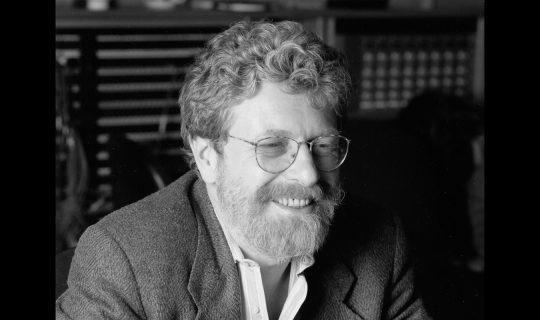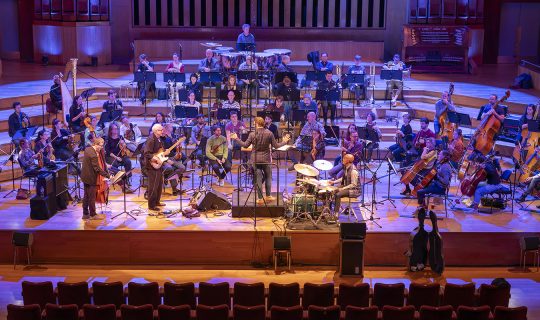January 24, 2013
As a work of pure music, Donald Byrd‘s A New Perspective is immaculate, one of the 1960s’ most direct expressions of jazz as a connection to the spiritual plane next to John Coltrane’s A Love Supreme. Byrd’s intent to take the gospel threads running through Dixieland and New Orleans jazz and wind them through the hard bop movement resulted in one of his most unique, yet career-defining, statements. And yet, there’s something else about it that, while comparatively superficial, gives it an extra sense of scope: that iconic Reid Miles cover, with Byrd looking like he’s a dozen yards in the distance as the bulbous nose of a Jaguar E-Type looms in the foreground.
That Jag isn’t just set dressing; Byrd was something of a gearhead and regularly drove an E-Type belonging to his girlfriend. (He also convinced Herbie Hancock to buy a Shelby Cobra with his first big royalty check in ’63, which makes me wonder whether the two ever staged impromptu drag races between sessions.) The artwork for A New Perspective had almost as much impact on the popular consciousness as the music it contains—rapper Tone-Loc irreverently restaged the shoot 26 years later for the cover of Loc-ed After Dark—and it’s tempting to try and figure out some deeper meaning from Byrd’s and Miles’ choice of imagery.
So is there any real link between the music and the sleeve? Do the performances and arrangements on one of the most beautiful, powerful, innovative jazz albums of the early ’60s take on any additional qualities when you listen to them over the growl of one of the most beautiful, powerful, innovative sports cars of the early ’60s? In my case, answering that question is going to be tricky: I don’t have any access whatsoever to a vintage Jag, and even if I did, the icy, salt-caked Twin Cities streets in the dead of winter don’t offer the most hospitable of circumstances to try it. (Even getting the damned thing started at ten below would be a major obstacle.) So, failing that, I have to turn to a simulation.
The E-Type is one of the featured vehicles in the long-running Forza Motorsport video game franchise, a series that prides itself on how closely it approximates the real-world feel of actual cars, from realistic suspension and weight transfer to the littlest detail in the fully-reproduced cockpits. And while the spinoff game Forza Horizon tweaks the formula a bit to make the driving model a little more accessible, its “open world” format—a sprawling amalgam of rural Colorado’s highways and back roads—means I can simply cruise around without being shoehorned into actual competitive racing. After switching off the game’s trendy festival-techno soundtrack and plugging in my iPod, I select the E-Type from my digital garage, configure it to factory-stock specifications, cue up A New Perspective and set out on the “road.”
It’s dark when I set out to the strains of “Elijah.” Forza Horizon has a 24-hour day/night cycle, sped up so you can go from dead of night to noon in less than 30 minutes’ time. Given the low-light conditions and the presence of other computer-controlled drivers on the road, I figure it makes sense to follow some vague semblance of the speed limit as I drive around aimlessly, and maybe start pushing the throttle down past 70 when the digital sunrise makes it easier to see where I’m going. But the soundtrack doesn’t make it easy to lay off the gas. “Elijah” is a joyous number, lively enough to make a drive in the country—even a computerized facsimile of the country—feel invigorating. Soon I’m thinking more about the music than any pretense of picking a destination, and I wind up wandering into the dirt-road confines of what appears to be a decrepit old steel mill as Donald Best‘s jittery vibraphone solo kicks in. I’m so caught up in this juxtaposition that I almost miss noticing an approaching lime green Lamborghini Miura—the same car Miles Davis crashed back in October ’72, right down to the color. At least this one jets past me unscathed. Soon enough, I head back onto asphalt, and when Byrd hits his piercing, rapturous solo I decide to floor it, just to see what the Jaguar’s capable of. I brush up against 135 MPH in fourth gear before chickening out.
Not that there are any real consequences for smashing into things here—I even switched off the option to give the car dinged-up bodywork if I wreck. It’s just that it wouldn’t feel right to break the spell of this music with an abrupt introduction to an out-of-nowhere guardrail. That said, the E-Type is kind of squirrelly, so it’s wise to take it easy, especially given how many hairpins and blind elevation changes there are to contend with. Thankfully, the sequencing follows up the jump-up of “Elijah” with the blues of “Beast of Burden”: through Hancock’s shivery little piano notes, Hank Mobley‘s sleepy-eyed tenor sax solo, the choir’s weary yet vivid scatting, and the longing cast of Byrd’s trumpet, it practically demands a light touch on the throttle. I set the (completely fictional) Finley Dam as a destination and glide smoothly under the shadows of tall polygonal trees and the bitmapped peaks of the Rockies.
Once I get to the scenic dam site, I feel compelled to get out and stretch my legs, figuratively speaking. The only way to really “exit” the car is to switch to photography mode, where you take out a virtual camera and sort of float around the car’s exterior in order to get a good snapshot of your ride. But I’m dismayed to find out that it’s not possible to recreate the cover shot of A New Perspective: there’s no fisheye lens option to make the hood look like it goes on forever. Still, the strains of “Cristo Redentor”—one of two Duke Pearson compositions on the record, and something of a highlight of the Byrd catalog—lends some reflective, melancholy weight to the few minutes I spend checking out the artificial scenery. Fake prettiness is still pretty, and the very real beauty of the choir’s mournful air and Byrd’s aching echoes of their melody lends some unexpected gravitas to a landscape that only exists thanks to a squad of coders.
Back on the road, the realization sinks in that this E-Type, at least in its stock form, could feasibly be outrun by a mid ’90s Honda Prelude. That doesn’t match the larger-than-life mythos of this car that I’ve spent some thirty years building up in my head, and it seems like high time to give this car some extra kick. Racing game convention practically demands that you’re entrusted with the ability to take a factory-stock car and dump all kinds of outlandish performance parts into it. With some weight reduction, a smoother suspension, and an additional 140 horsepower under the hood, a fast-for-1963 sports car becomes a fire-snorting beast that hits 165 in an eye-blink and takes corners like it’s skidding across a hockey rink. In this context, “The Black Disciple”—a vibrant, charging tour de force that falls somewhere between a stampede and a glide, thanks to the Herbie Hancock/Butch Warren/Lex Humphries rhythm section—is less a celebratory brush with the divine and more the soundtrack to a different kind of call to prayer entirely. Clearly some things aren’t meant to be tampered with, so as the sun sets, I restore the engine to its stock configuration and spend the remainder of my drive decompressing to the cool blues of the deceptively lighthearted yet emotionally resonant closer “Chant.” It’s clear by now that there’s a finely-tuned balance of refined elegance and gutsy soul that resonates through both parties depicted on the cover—though Byrd could’ve been leaning on the front end of a VW Beetle and still come through leading a session as thrilling and enduring as the 24 hours of Le Mans.




